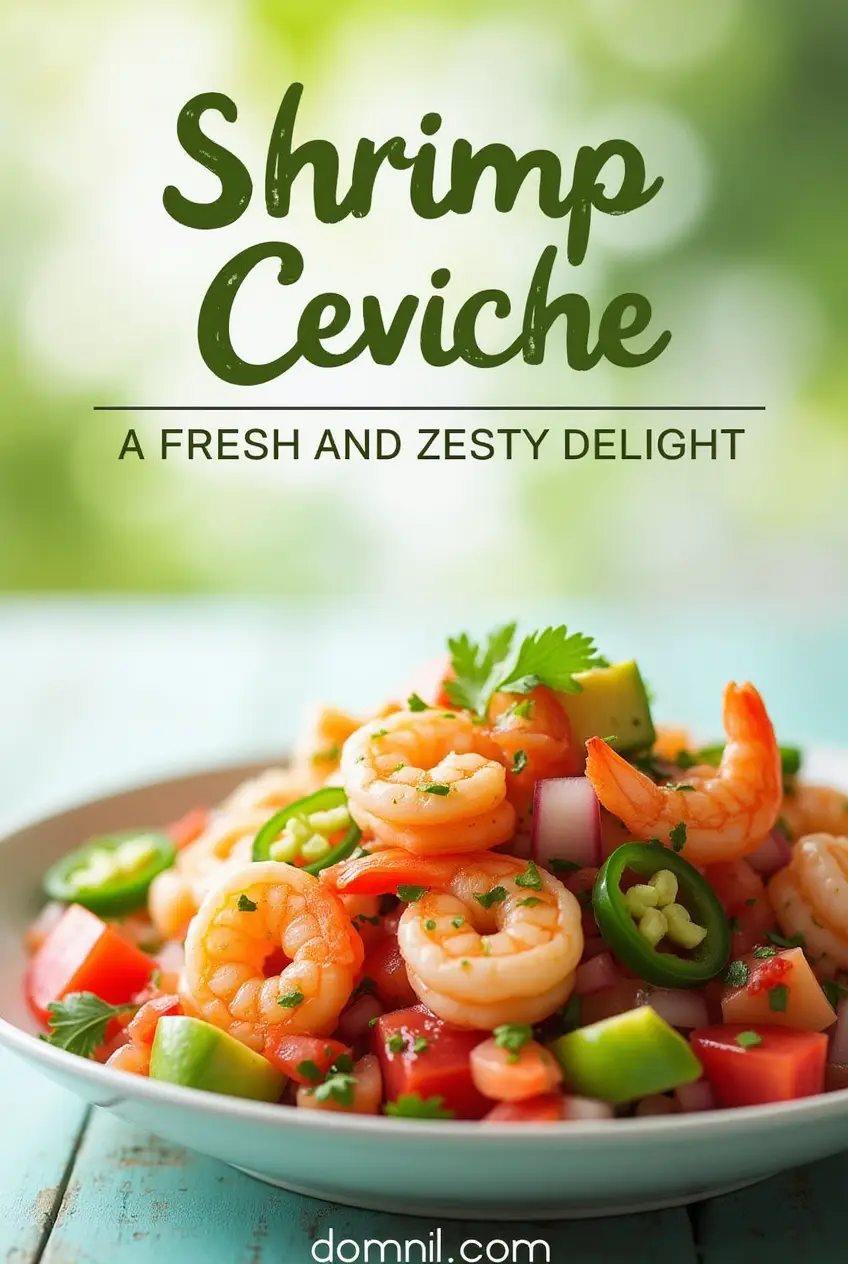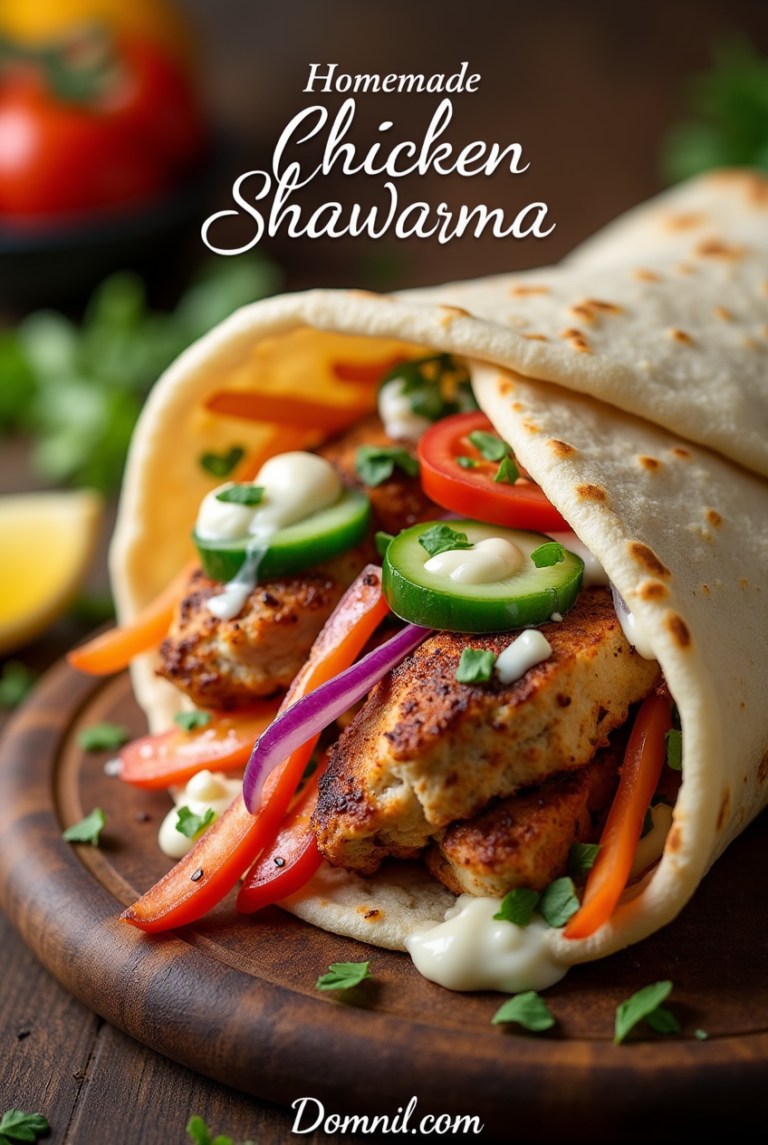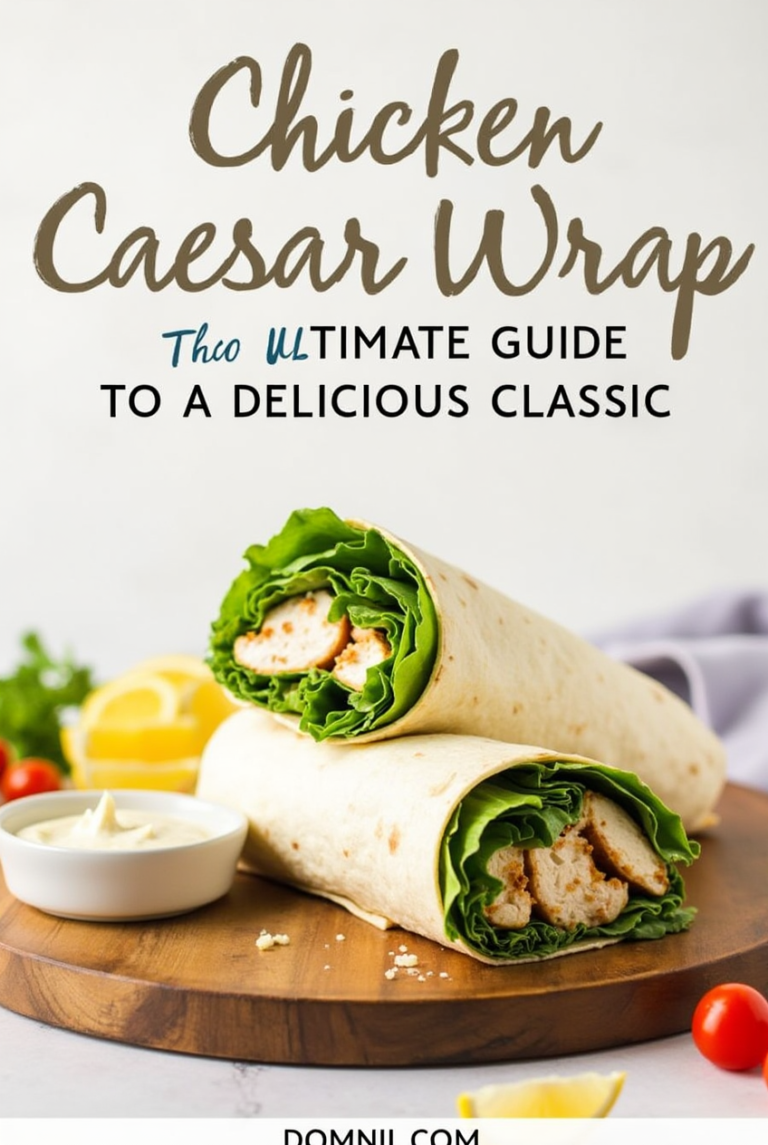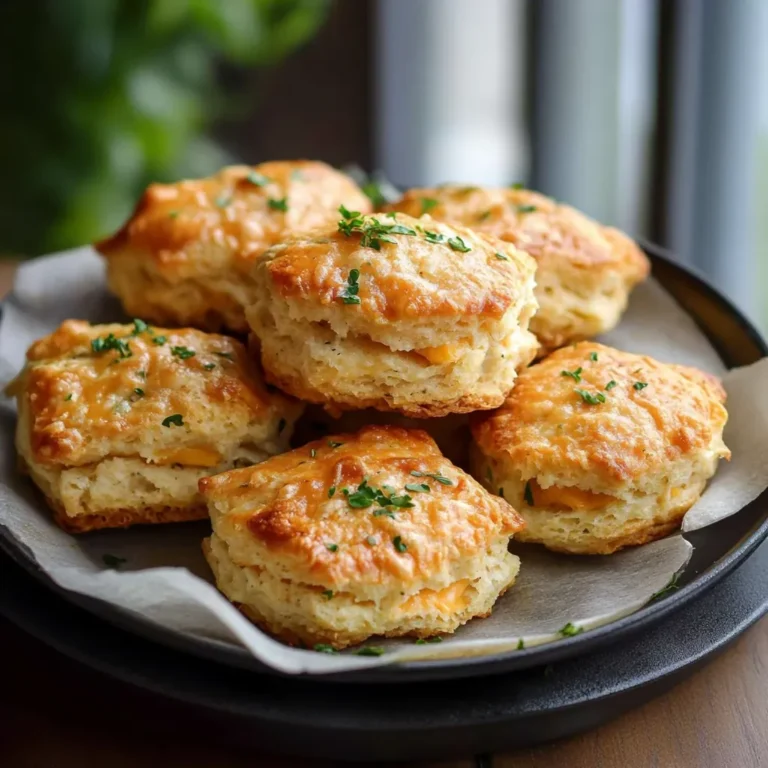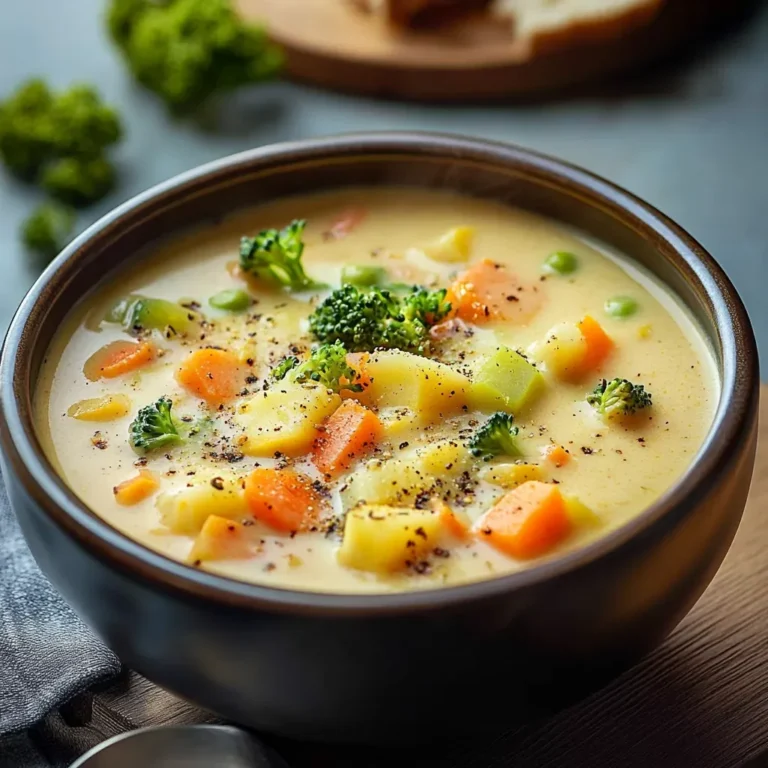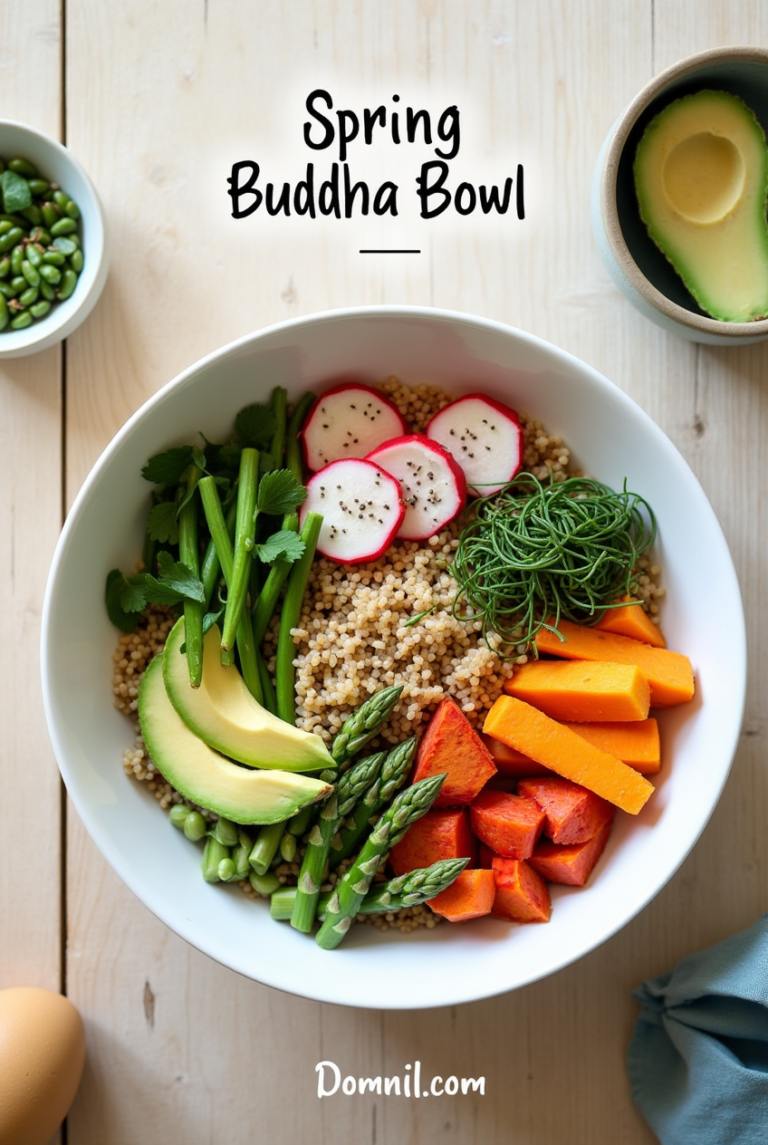Shrimp Ceviche Recipe: A Fresh and Zesty Delight
Introduction to Shrimp Ceviche
What Is Shrimp Ceviche?
Shrimp ceviche is the ultimate combination of fresh, tangy, and savory flavors. It’s a dish that doesn’t rely on heavy cooking techniques or complicated steps. Instead, it brings out the natural deliciousness of seafood with the bright acidity of citrus juices. In essence, ceviche is a method of “cooking” seafood without heat. Instead of using a stove or grill, the shrimp is marinated in lime or lemon juice, which denatures the proteins, firming up the shrimp and giving it that beautifully tender texture we all crave.
What makes shrimp ceviche stand out is its ability to feel light yet incredibly satisfying. Each bite bursts with a medley of flavors from fresh vegetables like tomatoes, onions, cilantro, and peppers, making it a refreshing choice for hot days, quick lunches, or even an elegant appetizer at a party. Whether you’ve had ceviche many times before or you’re trying it for the first time, making your own shrimp ceviche at home is an experience that brings you closer to the roots of Latin American cuisine.
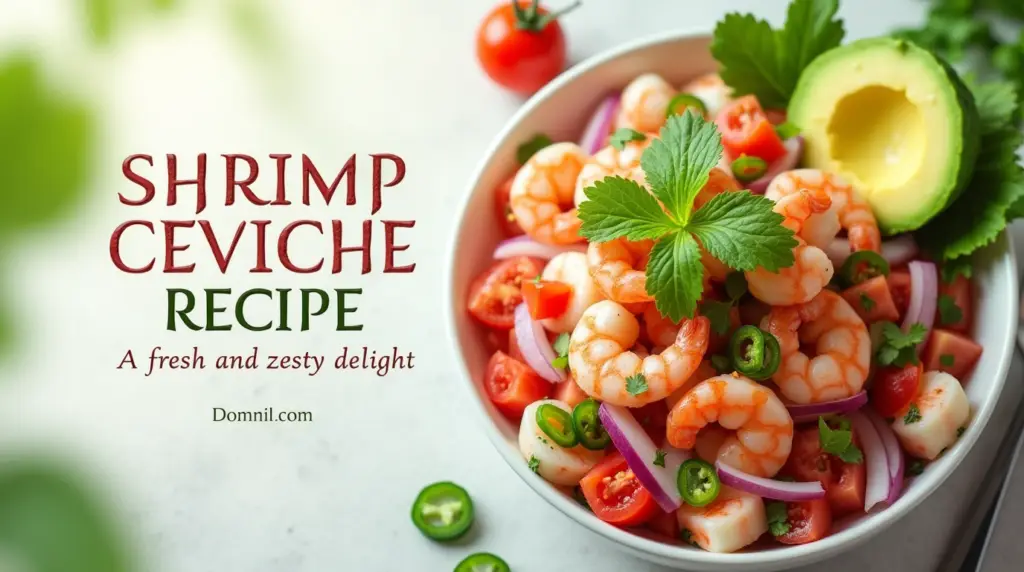
The Origins of Ceviche
Ceviche has a rich, vibrant history that spans centuries. Although Peru claims to be the birthplace of ceviche, several other coastal Latin American countries like Mexico, Ecuador, and Colombia have their own unique takes on it. In ancient times, fishermen would marinate their fresh catches in fermented fruit juices or chicha (a fermented corn beverage). Over time, this evolved into using citrus juices after the Spanish brought lemons and limes to the Americas.
Today, ceviche is a symbol of freshness and local flavor across many cultures. Each region has its own distinct version—some prefer it spicy, others keep it more mild and herbaceous. The shrimp ceviche we’re diving into today has strong ties to Mexican cuisine, where bright, lively flavors reign supreme.
Why You’ll Love This Shrimp Ceviche
Freshness at Its Best
There’s just something unbeatable about the taste of freshly made shrimp ceviche. Every ingredient plays a vital role: the zesty citrus juices that awaken your taste buds, the crunchy veggies that add texture, the shrimp that soaks up all those incredible flavors. When you take that first bite, it’s like a refreshing splash of ocean breeze on a warm summer day.
Shrimp ceviche is the epitome of freshness. Unlike other seafood dishes that might be masked with heavy sauces or excessive spices, ceviche keeps it simple. The spotlight stays on the quality and flavor of the shrimp and the natural essence of the accompanying ingredients. It’s a dish where less really is more.
Plus, making shrimp ceviche means you’re eating something that’s light yet protein-packed. It’s the kind of meal that satisfies your hunger without making you feel weighed down, perfect for anyone looking for a healthier yet indulgent meal option.
Perfect for Any Occasion
Shrimp ceviche isn’t just a dish; it’s a versatile culinary marvel. Hosting a summer barbecue? Shrimp ceviche makes a refreshing starter. Planning a casual get-together with friends? Serve it with crispy tortilla chips and watch it disappear. Need something special for a date night? Pair it with a chilled glass of Sauvignon Blanc and you’re set.
It’s also incredibly easy to scale. Whether you’re feeding just yourself or a large crowd, you can easily double or triple the ingredients without much extra effort. Plus, it doesn’t require expensive or hard-to-find ingredients, making it budget-friendly without sacrificing sophistication.
And let’s be honest: it looks as good as it tastes. The vibrant reds, greens, yellows, and pinks make shrimp ceviche a showstopper on any table. It’s colorful, cheerful, and instantly inviting—just like a fiesta on a plate!
Ingredients You’ll Need
Main Ingredients
Getting the right ingredients is crucial to making shrimp ceviche that’s bursting with flavor. Here’s what you’ll need:
-
Shrimp: Fresh, medium-sized shrimp (peeled and deveined).
-
Limes: Freshly squeezed for that essential citrus tang.
-
Lemons: Adds another layer of brightness.
-
Tomatoes: Firm and juicy, preferably Roma tomatoes.
-
Red Onion: Adds a sweet yet sharp bite.
-
Cilantro: Fresh and aromatic, it’s a non-negotiable in ceviche.
-
Jalapeño or Serrano Peppers: For those who like a little heat.
-
Cucumber: Optional but adds a refreshing crunch.
-
Avocado: Creamy richness that balances the acidity.
-
Salt and Pepper: To taste.
Pro Tip: Always opt for the freshest shrimp you can find. The better your shrimp, the better your ceviche will taste.
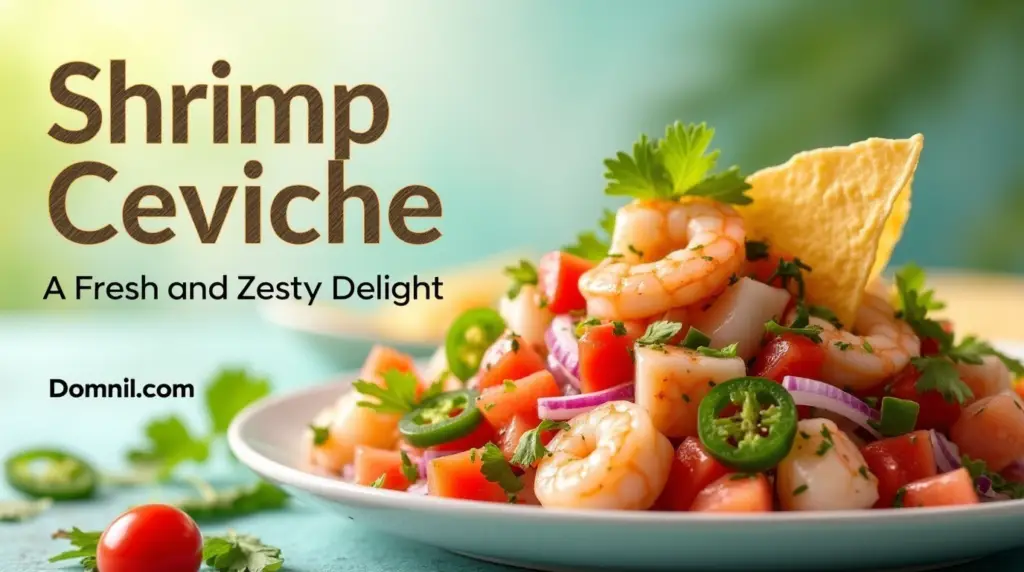
Optional Add-ins for Extra Flavor
If you want to get a little fancy or just play around with flavors, here are some fantastic add-ins:
-
Mango: Adds a sweet, tropical flair.
-
Pineapple: For a tangy-sweet twist.
-
Radish: Offers an extra peppery crunch.
-
Garlic: Finely minced for deeper flavor.
-
Olives: A briny contrast that works surprisingly well.
Feel free to mix and match based on what’s available and what your taste buds are craving!
Step-by-Step Guide to Making Shrimp Ceviche
Preparing the Shrimp
First things first: you need to prepare your shrimp correctly. Depending on where you live, raw shrimp may or may not be readily available. If you’re using raw shrimp, you’ll let the citrus juices “cook” it. If you’re nervous about consuming raw seafood, a quick poach in boiling water for 1-2 minutes before marinating will ease your mind while still giving you authentic texture.
-
If using raw shrimp: peel, devein, and chop into bite-sized pieces.
-
If lightly cooking: bring water to a boil, toss in the shrimp, and remove after 1-2 minutes. Immediately plunge them into an ice bath to stop the cooking process.
The key is ensuring the shrimp are not overcooked—they should be tender, not rubbery.
Marinating the Shrimp
Now comes the magical part—marination! Place your shrimp in a large glass bowl. Pour in enough freshly squeezed lime and lemon juice to fully cover the shrimp. Stir gently to ensure all pieces are evenly coated.
Cover the bowl with plastic wrap and refrigerate for at least 30 minutes to 1 hour. You’ll notice the shrimp turning from translucent grey to an opaque white/pink, signaling they’re “cooked” through. If you prefer a firmer texture, let them marinate a little longer, but be careful: over-marinating can make the shrimp tough.
During this time, the citrus juice not only “cooks” the shrimp but also infuses it with that tart, zesty flavor we all love in a good ceviche.
Mixing in Fresh Vegetables
Once your shrimp is ready, it’s time to add the crunch and color. Drain off about half of the citrus juice (this prevents your ceviche from becoming too soupy) and start mixing in the vegetables:
-
Diced tomatoes
-
Chopped red onion
-
Finely minced jalapeño or serrano peppers
-
Cucumber cubes
-
Chopped cilantro
Stir gently but thoroughly to distribute all the ingredients evenly. The bright colors and fresh aromas will hit you immediately—this is where the ceviche truly starts coming alive.
Taste at this stage and adjust the seasoning with salt and pepper. Sometimes a little extra squeeze of lime or a sprinkle of salt makes all the difference.
Final Touches and Serving
Now, for the final luxurious touch—avocado. Dice it into small chunks and gently fold it into the ceviche right before serving. Avocado adds a creamy texture that beautifully balances the bright, acidic notes of the citrus.
Serving Ideas:
-
Tortilla Chips: Scoop up bites like a chunky salsa.
-
Tostadas: Spread ceviche atop crispy tortillas.
-
Lettuce Cups: For a low-carb, crunchy option.
Garnish with extra cilantro, lime wedges, and maybe a few thin slices of radish for an extra pop of color.
Presentation Tip: Serve your shrimp ceviche chilled, in a clear glass bowl or even small individual cups for a more elegant presentation.
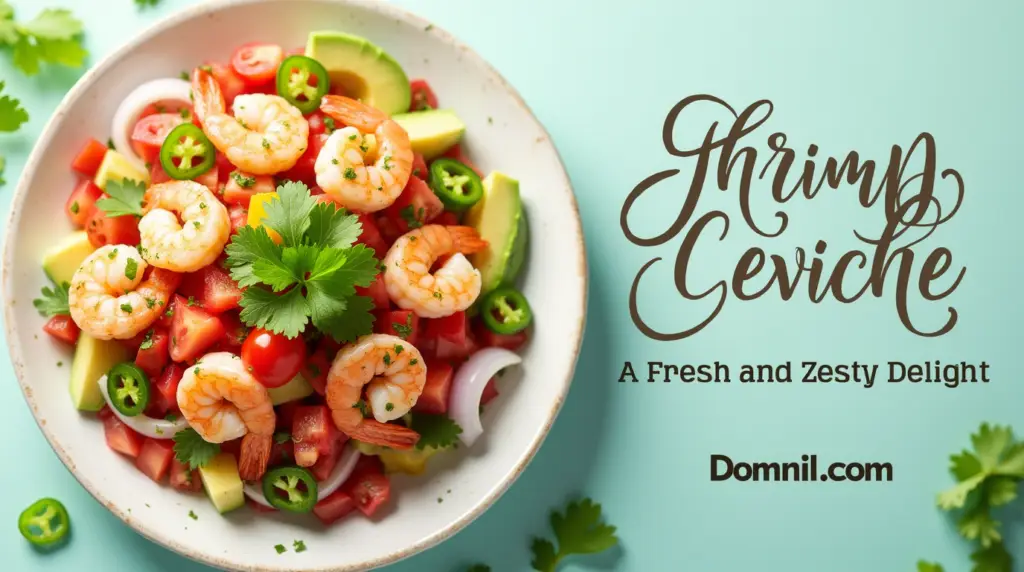
Tips and Tricks for the Perfect Shrimp Ceviche
How to Choose the Best Shrimp
Quality shrimp = quality ceviche. Here’s what you need to look for:
-
Freshness: Always smell your shrimp. They should have a clean, ocean-like scent—not fishy or sour.
-
Firmness: Fresh shrimp will feel firm and plump.
-
Source: If you’re near the coast, fresh is best. If not, frozen shrimp can work wonders. Just make sure it’s wild-caught if possible for the best flavor.
Quick Tip: Buy shrimp that’s already peeled and deveined to save yourself some prep time.
How Long to Marinate for Perfect Texture
Timing is crucial when marinating shrimp:
-
30 minutes: Slightly translucent center, very tender.
-
1 hour: Fully opaque, firmer texture.
-
2+ hours: Risk of rubbery shrimp.
If you like a slightly more “al dente” feel, stick closer to the 30-minute mark. For classic texture, 1 hour is the sweet spot.
Pro Tip: Stir your ceviche halfway through marination to ensure even “cooking.”
Variations of Shrimp Ceviche
Spicy Shrimp Ceviche
If you like it hot, this twist is for you. Simply increase the number of peppers, or add different types like habaneros for a serious kick.
Other spicy upgrades:
-
Add a splash of hot sauce (like Cholula or Tabasco).
-
Mix in a teaspoon of chili powder or smoked paprika for depth.
-
Garnish with thin slices of red chili peppers.
Trust me, spicy shrimp ceviche with an ice-cold beer? That’s a match made in heaven.
Tropical Shrimp Ceviche
Want to feel like you’re on a Caribbean beach? Tropical ceviche variations incorporate sweet fruits for a burst of flavor.
Ideas for a tropical twist:
-
Diced mango or pineapple
-
Sliced coconut
-
A touch of honey in the marinade
-
A sprinkle of toasted coconut flakes as a garnish
These fruity additions contrast the acidity beautifully and make the ceviche feel even more refreshing and exotic.
What to Serve with Shrimp Ceviche
Best Sides
Pair your ceviche with complementary sides to round out your meal:
-
Tortilla Chips: Crispy, salty, and perfect for scooping.
-
Grilled Corn: Adds smoky sweetness.
-
Guacamole: You can never have too much avocado, right?
-
Rice: Light, fluffy white rice balances the citrusy punch.
For a party, you could even set up a ceviche bar with a variety of toppings and sides. Talk about a showstopper!
Best Drinks
A good drink pairing can elevate your shrimp ceviche experience:
-
Beer: Light Mexican beers like Corona or Modelo.
-
Wine: Crisp whites like Sauvignon Blanc or Albariño.
-
Cocktails: Margaritas, mojitos, or even a spicy michelada.
The goal is to choose something crisp, refreshing, and not too overpowering to let the delicate flavors of the ceviche shine through.
How to Store Leftover Shrimp Ceviche
Best Practices for Storing
Let’s face it: shrimp ceviche is best eaten fresh. However, if you happen to have leftovers, don’t worry—you can store them safely with the right method.
Here’s how:
-
Use an airtight container: This helps prevent your ceviche from absorbing other odors in the fridge.
-
Keep it chilled: Always refrigerate ceviche at or below 40°F (4°C).
-
Store promptly: Don’t let the ceviche sit out at room temperature for more than 30 minutes after serving.
Place it into the container as soon as possible after everyone has had their fill. Keeping it cold ensures the shrimp stays safe to eat and maintains its texture.
Pro Tip: Cover the top of the ceviche with a thin layer of plastic wrap pressed directly onto the surface before sealing the container. This reduces air exposure and helps maintain freshness longer.
How Long Does It Last?
Shrimp ceviche can last up to 2 days in the refrigerator. However, its texture will change slightly over time:
-
Day 1: Still crisp, bright, and delicious.
-
Day 2: A bit softer, as the acidity continues to “cook” the shrimp and vegetables.
-
Beyond Day 2: It’s not recommended to eat ceviche after 48 hours, as the texture degrades and the risk of spoilage increases.
Bottom Line: Make only as much as you plan to eat within a day or two for the best taste and safety.
Health Benefits of Shrimp Ceviche
Low in Calories, High in Nutrients
Shrimp ceviche isn’t just delicious—it’s a nutritional powerhouse, too!
A typical serving of shrimp ceviche provides:
-
Low Calories: Great for weight management.
-
High Protein: Shrimp is packed with lean, muscle-building protein.
-
Vitamins and Minerals: You get a healthy dose of Vitamin C, potassium, magnesium, and iron from the shrimp and the fresh vegetables.
Since it’s prepared without frying or heavy sauces, shrimp ceviche is naturally low in saturated fat and cholesterol. It’s a guilt-free indulgence that leaves you feeling refreshed and energized rather than bloated.
Packed with Fresh Vegetables
Another huge plus? You’re getting a rainbow of vegetables with every bite. Tomatoes, onions, cucumbers, peppers, cilantro—they all bring essential nutrients and antioxidants to the table.
Eating more fresh vegetables:
-
Boosts immune health
-
Supports heart health
-
Enhances digestion
-
Helps fight inflammation
Shrimp ceviche is essentially a bowl of edible wellness—with a side of tropical vacation vibes.
Common Mistakes to Avoid When Making Shrimp Ceviche
Overcooking the Shrimp
This is the number one mistake people make! Whether you’re using heat or relying purely on citrus juice, timing is critical.
Signs you’ve overcooked shrimp:
-
It turns rubbery and tough
-
It shrinks significantly
-
It loses its natural sweetness
Always keep an eye on your marination time. Less is often more when it comes to shrimp!
Pro Tip: Err on the side of slightly under-marinated. The shrimp will continue to cook a bit even after you mix in the other ingredients.
Not Using Enough Citrus
Citrus is the heart and soul of ceviche. Skimping on lime and lemon juice results in unevenly “cooked” shrimp and a dull flavor.
How much is enough? Generally:
-
Use about 1/2 cup of citrus juice per 1 pound of shrimp.
-
Make sure the shrimp is fully submerged during the marination phase.
And remember: fresh-squeezed is non-negotiable. Bottled lime juice just doesn’t deliver the same vibrant punch.
Tools to Prepare Shrimp Ceviche
1. Sharp Knife
-
For finely dicing shrimp, tomatoes, onions, peppers, cucumbers, and other fresh ingredients.
-
A good chef’s knife ensures clean cuts and faster prep.
2. Cutting Board
-
Preferably two: one for seafood and one for vegetables to avoid cross-contamination.
-
Opt for non-slip boards for added safety.
3. Citrus Juicer
-
Makes extracting juice from limes and lemons much quicker and easier.
-
A handheld reamer or press-style juicer works perfectly.
4. Mixing Bowls
-
Glass or stainless steel bowls are best (avoid reactive metals like aluminum).
-
You’ll need at least two: one for marinating shrimp and another for mixing ingredients.
5. Measuring Cups and Spoons
-
For accurately measuring citrus juice, salt, pepper, and any optional add-ins.
6. Plastic Wrap or Lid
-
To cover the bowl during marination and ensure even “cooking” of the shrimp.
7. Slotted Spoon
-
Ideal for serving the ceviche, allowing you to drain off excess liquid before plating.
8. Refrigerator
-
Essential for chilling the ceviche during marination to keep it fresh and safe to eat.
Optional Tools:
-
Food Processor: If you want to quickly chop large amounts of vegetables.
-
Tongs: For gently mixing delicate ingredients like avocado into the ceviche.
FAQs About Shrimp Ceviche
Can You Make Shrimp Ceviche Ahead of Time?
Absolutely—but with a few precautions.
-
Best timing: Prepare it no more than 2–4 hours before serving.
-
Storage: Keep it covered and chilled until you’re ready to eat.
-
Avocado: Add it just before serving to prevent browning.
Making it too far in advance can cause the shrimp to become overcooked and the vegetables to lose their crunch.
Can You Use Frozen Shrimp?
Yes! Frozen shrimp actually works really well for ceviche—as long as you thaw it properly.
-
Thaw safely: Place the shrimp in the refrigerator overnight or under cold running water.
-
Drain thoroughly: Remove excess water before marinating.
Frozen shrimp can sometimes even taste fresher than “fresh” shrimp, depending on how long the seafood counter has had it sitting out. Just ensure you’re buying high-quality, wild-caught shrimp when possible.
Conclusion
Shrimp ceviche is a dish that brings people together—whether it’s at a beach party, a family gathering, or simply at your kitchen table. Its explosion of flavors, ease of preparation, and health benefits make it a must-try for seafood lovers and fresh-food enthusiasts alike. From choosing the perfect shrimp to mastering the marination timing, every step adds up to a refreshing, satisfying experience you’ll crave again and again.
With this ultimate guide, you now have all the tools and secrets to craft a restaurant-quality shrimp ceviche right at home. So grab some fresh shrimp, squeeze those limes, and dive into one of the freshest dishes you’ll ever taste!
FAQs
Q1: Can I use other seafood besides shrimp for ceviche?
Absolutely! Scallops, white fish (like tilapia or halibut), and even octopus are fantastic alternatives or additions to shrimp ceviche.
Q2: How spicy can I make shrimp ceviche?
As spicy as you like! Add more jalapeños, serranos, or even a dash of hot sauce to turn up the heat.
Q3: Is it safe to eat ceviche made with raw shrimp?
Yes, when prepared properly. The acid in citrus juice denatures proteins similarly to heat. However, for extra caution, you can briefly parboil the shrimp before marinating.
Q4: What type of lime is best for ceviche?
Key limes offer an intense, aromatic acidity that’s perfect for ceviche. Regular Persian limes work great too and are easier to find.
Q5: Can vegetarians enjoy ceviche?
Sure! Make a “veggie ceviche” using diced mango, cucumber, tomatoes, avocado, and lots of citrus juice. It’s just as refreshing and colorful!

